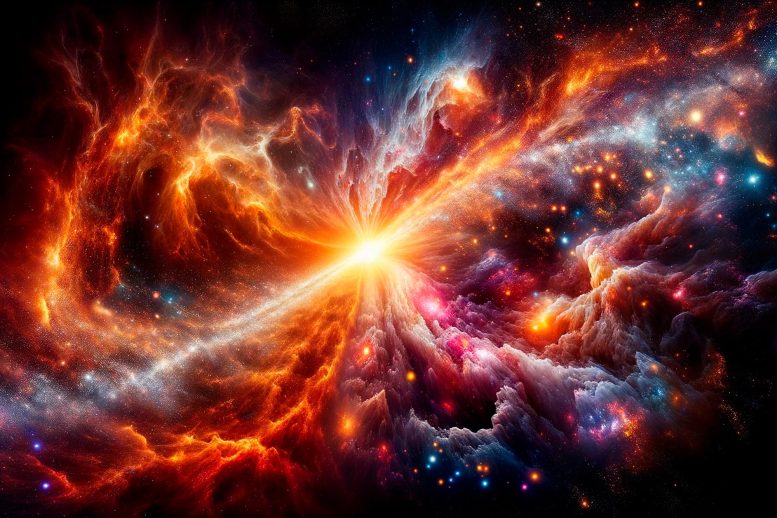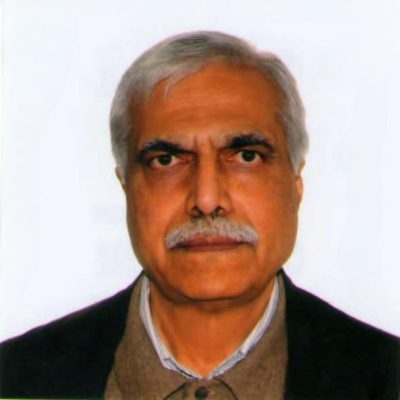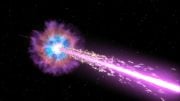
A groundbreaking study by the University of Ottawa, led by physicist Rajendra Gupta, proposes a new cosmological model, the CCC+TL model, which argues that dark matter is not necessary to explain the universe’s behavior. Credit: SciTechDaily.com
The current theoretical model for the composition of the universe is that it’s made of ‘normal matter,’ ‘dark energy’ and ‘dark matter.’ A new study challenges this.
A University of Ottawa study published in The Astrophysical Journal challenges the current model of the universe by showing that, in fact, it has no room for dark matter.
In cosmology, the term “dark matter” describes all that appears not to interact with light or the electromagnetic field, or that can only be explained through gravitational force. We can’t see it, nor do we know what it’s made of, but it helps us understand how galaxies, planets, and stars behave.
New Model Proposal
Rajendra Gupta, a physics professor at the Faculty of Science, used a combination of the covarying coupling constants (CCC) and “tired light” (TL) theories (the CCC+TL model) to reach this conclusion. This model combines two ideas — about how the forces of nature decrease over cosmic time and about light losing energy when it travels a long distance. It’s been tested and has been shown to match up with several observations, such as about how galaxies are spread out and how light from the early universe has evolved.
This discovery challenges the prevailing understanding of the universe, which suggests that roughly 27% of it is composed of dark matter and less than 5% of ordinary matter, remaining being the dark energy.

“The study’s findings confirm that the universe does not require dark matter to exist,” said Rajendra Gupta, Physics professor at the Faculty of Science, uOttawa. Credit: University of Ottawa
Challenging the Need for Dark Matter in the Universe
“The study’s findings confirm that our previous work (“JWST early Universe observations and ΛCDM cosmology”) about the age of the universe being 26.7 billion years has allowed us to discover that the universe does not require dark matter to exist,” explains Gupta. “In standard cosmology, the accelerated expansion of the universe is said to be caused by dark energy but is in fact due to the weakening forces of nature as it expands, not due to dark energy.”
“Redshifts” refer to when light is shifted toward the red part of the spectrum. The researcher analyzed data from recent papers on the distribution of galaxies at low redshifts and the angular size of the sound horizon in the literature at high redshift.
“There are several papers that question the existence of dark matter, but mine is the first one, to my knowledge, that eliminates its cosmological existence while being consistent with key cosmological observations that we have had time to confirm,” says Gupta.
By challenging the need for dark matter in the universe and providing evidence for a new cosmological model, this study opens up new avenues for exploring the fundamental properties of the universe.
Reference: “Testing CCC+TL Cosmology with Observed Baryon Acoustic Oscillation Features” by and Rajendra P. Gupta, 15 March 2024, The Astrophysical Journal.
DOI: 10.3847/1538-4357/ad1bc6









Could use some collaboration of other physicists, take the peer review away from the critics.
Oh, here we go with “tired light” again. This has been disproven time after time.
Three problems with “tired light”:
1) It doesn’t match the rate of redshift observed from distant galaxies.
2) It fails to consider the accelerating expansion of the universe.
3) No mechanism has been successfully proposed to explain why radiation would lose energy as it travels.
Any research based on this bunk deserves every ounce of criticism it receives. Failing to mention these problems with “tired light” is irresponsible journalism.
If the weakening of the fundamental forces is to account for the expansion of the universe (rather than dark matter/energy), then we would expect that weakening to be universal. This would mean those same forces (namely, gravity), would weaken over time here on Earth. With access to highly sensitive equipment and funding, this could easily be tested for. Has gravity on Earth gotten weaker?
good point
In a closed system of the Universe total energy remains unchanged but space expands, black holes evaporate and light energy gets reabsorbed by a negative vacuum energy.
I’m not sold on Dark Matter or Dark Energy. I’m not against them, either. I tend to remain agnostic and open minded about these things. Personally, I think we’re just scratching the surface of all there is to know. We need to remain flexible, but also critical of any and all new ideas about how the universe works.
Finally something sensible on SciTechDaily!
Dark matter was just a placeholder for “no clue”.
What if gravity is a weaken force, a rebound force from the big bang
“No mechanism has been successfully proposed … (for tired light)”
By far the cutest, most attractive reason of all.
“Tired” implies the light is slowing down, to me, and that situation could conceivably apply to light redshifted by climbing against gravity, but gravitational red-shift is largely a separate topic outside of a notion that gravity of cooling matter can gradually become retro-reflectively focused, with consequently enhanced red-shifting, between objects sharing a common spin axis and also to a lesser degree between objects sharing a common spin equator, promoting (in conjunction with a galactic-scale stationary wave field property of stationary matter) the formation of e.g. flat galactic spirals with galactic bulges and spin-carrying filaments.
CCC is another variation on Dirac’s LNH, which I’ve suggested before resembles an attempt to distract from the idea of matching a galactic-scale stationary wave vector-field effect to (supposedly) distance-independent EM/Gravity force-ratio between protons.
My best guess at an explanation for a distance-based redshift is that gravity of surrounding off-path matter dilates passing light over sufficient time spans. Imagine a photon that can’t decide to bend left toward one mass or bend right toward an equivalent mass on the opposite side, so it does a little of both.
Debunked huh? Oooookkkaaayyyyy
So “debunk” means to propose an alternative? That’s strange. I’ve been using that word wrong all this time.
I’m confused. The headline says “dark matter” is “debunked” by this study, but quotes attributed to Prof. Gupta mention both dark matter and dark energy. Does the study suggest neither dark matter nor dark energy are required to explain everything?
Don’t worry, it will all be figured out in the distant future when all of us are dead and no longer able to pontificate.
Now, in May 2024, exactly 10 years have passed since the first article on the fallacy of “dark matter” was published on the arXiv.org portal http://arxiv.org/abs/1406.2401. Since then, more books have been written on this topic. All these 10 years I not only spoke and wrote, I shouted about the gross mistakes of the so-called “scientists-cosmologists”. There is not and cannot be any “dark” matter, energy, “Big” bangs and other crazy inventions of cosmologists. But modern cosmologists are very slow to savvy. Moreover, as this article proves, after many years, what I had already published earlier and was understandable to any high school student is suddenly presented as a kind of new discovery. Precisely – not an admission of gross mistakes, but a new discovery.
Olbers’ Paradox, dark matter, dark energy, the big bang and other inventions are the grossest mistakes of cosmologists. Such elementary mistakes made by these so-called “cosmologists” are not permissible even for middle school students of the most mediocre school. These errors are analyzed in detail on a solid foundation of physical laws (without any scientific delusional fantasies of cosmologists) in the book “Big Bang of Scientific Idiocy”, author Pavlovich Konstantin. The book can be downloaded from аmаzon.